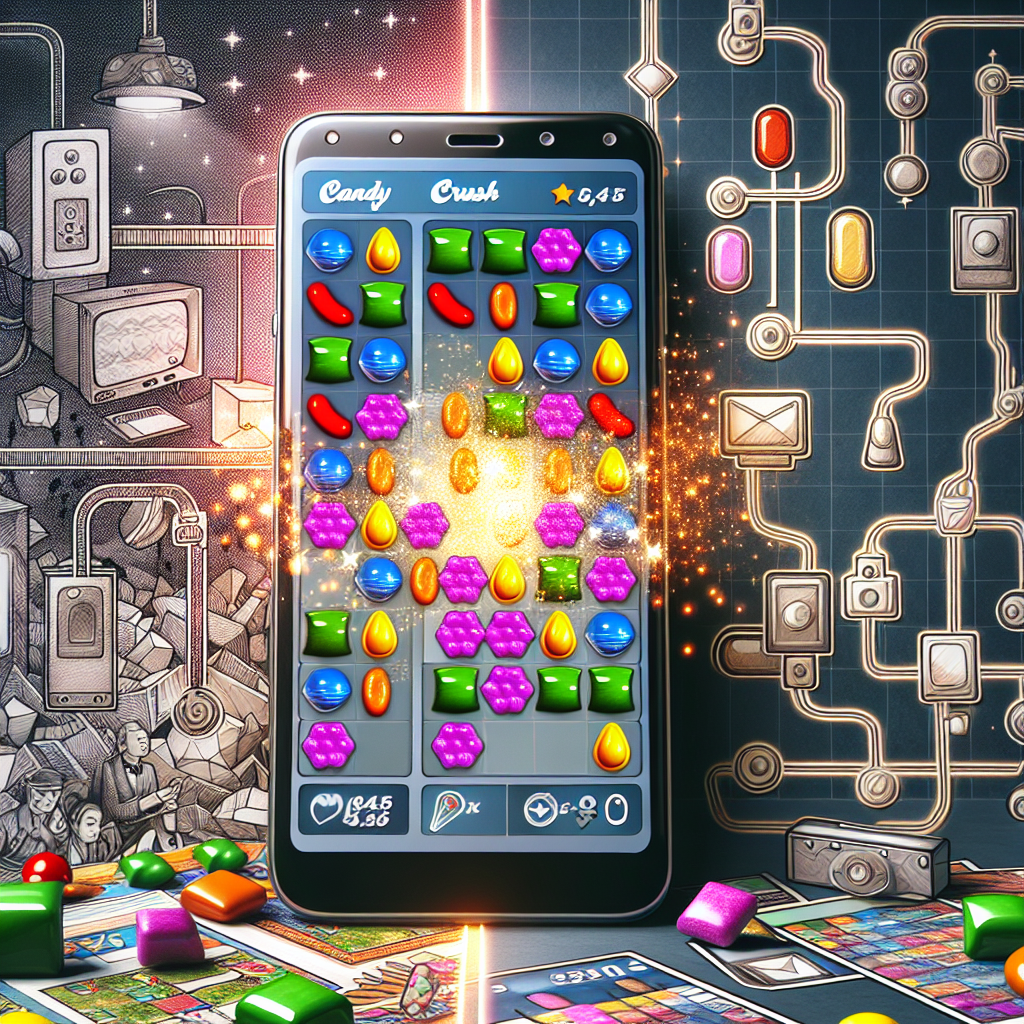How Candy Crush Has Revolutionized Mobile Gaming
How Candy Crush Has Revolutionized Mobile Gaming: A Comprehensive Analysis
Candy Crush Saga, developed by King, has drastically shaped the mobile gaming industry since it burst onto the scene in 2012. With its intuitive mechanics, vibrant graphics, and innovative monetization strategies, Candy Crush has set a new standard for mobile games. This article delves into how Candy Crush has revolutionized mobile gaming, examining its influence on game design, monetization, social engagement, and industry practices.
User-Centric Design and Accessibility
One of the most distinguishing features of Candy Crush is its user-centric design. The game’s mechanics are inherently simple, revolving around matching three or more candies of the same color to achieve objectives. This simplicity is deceptive, as the game gradually introduces complexity through various obstacles and power-ups, offering players a sense of progression without overwhelming them. Such design ensures that new players can grasp the basics quickly, while seasoned players find enough challenge to remain engaged.
Candy Crush embraces a play-anywhere, play-anytime philosophy that is perfectly suited to the mobile platform. The iteration of levels with bite-sized challenges lets users complete a puzzle in a short span, ideal for gaming on the go. This drop-in/drop-out gameplay model has been pivotal in attracting a diverse demographic, including users who may not typically identify as gamers.
Innovative Monetization Strategies
Candy Crush has been at the forefront of pioneering monetization strategies that have become standard in the mobile gaming industry. It operates on a freemium model, allowing players to download and play the game for free while offering in-app purchases. These purchases range from extra lives to special boosters that help overcome challenging levels.
A key to the game’s revenue-generating success is its life system, where players have a limited number of lives that regenerate over time. This mechanic introduces a waiting period that can be bypassed through microtransactions, enticing impatient players to spend money to keep playing. The subtle psychological cues embedded within this system have proven especially effective in driving purchases.
Candy Crush’s monetization approach has inspired countless other games to adopt similar strategies. By capitalizing on player’s impatience while assuring that spending is optional, Candy Crush has demonstrated that free-to-play games can be highly profitable without alienating the player base.
Social Integration and Virality
Social integration is another area where Candy Crush has set a precedent. By incorporating social media connectivity, the game allows players to interact with friends, send and receive lives, and compete on leaderboards. This social aspect not only enhances the gaming experience but also serves as a powerful marketing tool.
The strategic use of Facebook for cross-platform play has been critical to Candy Crush’s success. This feature permits players to seamlessly transition between devices without losing progress, encouraging them to play more frequently and for longer durations. Additionally, players receive notifications prompting them to return to the game, maintaining engagement and virality.
Candy Crush’s integration with social media has highlighted the significance of community and competition in enhancing player retention. Many contemporary mobile games have since emulated this model, demonstrating the importance of fostering a connected user experience.
Data-Driven Development and Personalization
King has employed data-driven strategies to refine Candy Crush, continually analyzing player behavior to optimize game mechanics. This meticulous approach allows the developers to identify which levels are too difficult or too easy and adjust them accordingly. Data-driven insights have enabled a personalized gaming experience that continually adapts to meet players’ evolving expectations.
Candy Crush also utilizes A/B testing to experiment with different game elements, such as graphics and user interface adjustments, ensuring that any changes enhance the user experience. This adaptability has allowed the game to stay relevant and engage players across multiple years.
By leveraging big data and analytics, Candy Crush has not only maintained its appeal but also pioneered a method of game development that has been adopted industry-wide. This model emphasizes the value of player feedback and real-time data in creating immersive and enjoyable gaming experiences.
The Cultural Phenomenon of Casual Gaming
Candy Crush has been instrumental in the rise of casual gaming, making gaming a mainstream activity embraced by a wide audience. It has dispelled the notion that video games are solely the domain of hardcore gamers by proving that ease of access and enjoyable gameplay can attract a broad demographic. Its appeal extends to elderly players and those who do not typically engage in gaming, significantly widening the traditional gaming audience.
The game’s catchy, candy-themed visuals and satisfying sound effects create a sensory experience that adds to its broad appeal. This distinctive aesthetic has contributed to the iconic status of Candy Crush, further emphasizing how branding and theme consistency can enhance recognition and memorability in mobile games.
Educational Insights and Cognitive Benefits
Studies have suggested that engaging in puzzle games like Candy Crush can have cognitive benefits. The game’s need for strategic thinking and planning can potentially enhance cognitive functions such as problem-solving skills, memory, and spatial awareness. While the primary aim is entertainment, the unintended cognitive stimulation adds an educational dimension to the game, appealing to parents and educators alike.
Candy Crush has shown how mobile games can go beyond mere distraction, providing an engaging way to exercise and develop cognitive skills. This realization has encouraged developers to consider educational angles when designing game mechanics, further broadening the impact and purpose of mobile gaming.
Trailblazing Events and Seasonal Content
Another revolutionary aspect of Candy Crush is its use of in-game events and seasonal content to maintain player interest over long periods. King has regularly updated the game with new levels, themed events, and challenges that align with real-world holidays and seasons, fostering a sense of freshness and urgency among players.
These updates serve to re-engage lapsed users, offering fresh content and new rewards while tapping into the excitement surrounding particular times of the year. This approach enriches the player experience and increases user retention rates by providing continuous novelty.
Candy Crush’s strategy of frequent content updates has become a norm in the industry, illustrating the importance of dynamic content in maintaining user interest in mobile games.
The Legacy of Candy Crush in Mobile Gaming
By analyzing how Candy Crush has altered the mobile gaming landscape, we observe a profound impact that extends beyond the game’s mechanics and monetization strategies. It has successfully redefined user engagement, highlighted the importance of social interactivity, and demonstrated the lucrative potential of free-to-play models.
As mobile gaming continues to evolve, the benchmarks set by Candy Crush in user accessibility, financial success, and audience reach will continue to influence the industry. Future developers will undoubtedly draw inspiration from its successes, leveraging similar strategies to captivate audiences and advance the field of mobile gaming.
Candy Crush Saga stands as a testament to the power of innovative design in transforming not only a genre but the very nature of how games are played, perceived, and monetized in the digital age. Its legacy is one of creativity, inclusivity, and sustained engagement—an exemplary model for mobile gaming’s potential to become a unifying social phenomenon.












Post Comment